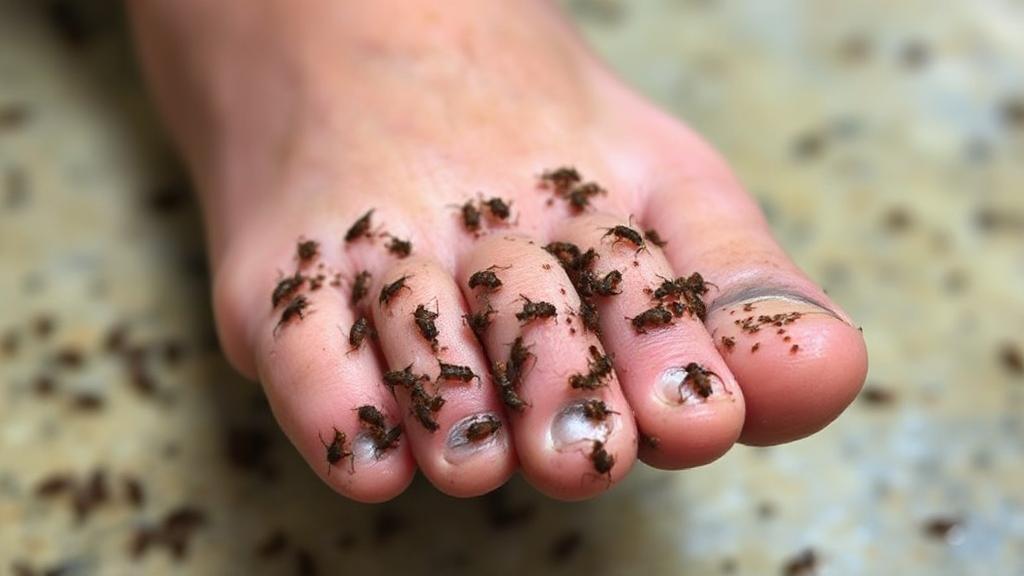Introduction to Jiggers
Jiggers, scientifically known as Tunga penetrans, are tiny parasitic insects that can cause significant health issues, particularly in tropical and subtropical regions. These sand fleas are notorious for burrowing into the skin, often targeting the feet, and can lead to severe discomfort and health complications if not addressed promptly.
What Are Jiggers?
Jiggers are small fleas, measuring about 1 mm in size, that thrive in warm, dry, and sandy environments. They are commonly found in sub-Saharan Africa, the Caribbean, and parts of South America. The female jigger flea is responsible for health issues, as it burrows into the skin to lay eggs, causing a condition known as tungiasis.
Life Cycle
- Adult female jigger penetrates human skin
- Begins feeding on blood and tissue
- Grows up to 2000 times its original size
- Lays 100-200 eggs
- Eggs fall to the ground and continue the cycle
Symptoms and Health Impact
Physical Effects
- Intense itching and pain
- Formation of dark spots on the skin
- Difficulty walking
- Deformation of toes
- Secondary bacterial infections
Complications
- Secondary Infections: Open sores can become infected with bacteria
- Tetanus: Increased risk in prevalent areas
- Mobility Issues: Severe infestations affect daily activities
"Jigger infestation is not just a health issue but a social problem that perpetuates the cycle of poverty in affected communities." - World Health Organization
Prevention and Treatment
Prevention Strategies
- Wearing closed shoes
- Regular inspection of feet
- Keeping floors clean and dry
- Using insecticide sprays
- Maintaining good personal hygiene
Treatment Options
Community Response and Long-term Solutions
To effectively address the jigger problem, communities need:
| Intervention Area | Required Actions |
|---|---|
| Infrastructure | Improved housing and flooring |
| Healthcare | Regular medical services |
| Education | Sustained awareness programs |
| Economic | Poverty reduction initiatives |
Education Programs
- Teaching proper hygiene practices
- Raising awareness about early detection
- Demonstrating preventive measures
Medical Outreach
- Providing free treatment camps
- Distributing protective footwear
- Training local health workers
Warning Signs
Be alert to these early symptoms:
- White itchy spots on feet
- Small black dots in the skin
- Pain when walking
- Sensation of something moving under the skin
Conclusion
Understanding jiggers and their impact on feet health is crucial for preventing and managing infestations. Through combined efforts of medical intervention, community education, and improved living conditions, it's possible to reduce the impact of these parasites on affected populations. For more information about jigger prevention and treatment, visit the Centers for Disease Control and Prevention website or consult local healthcare providers.
